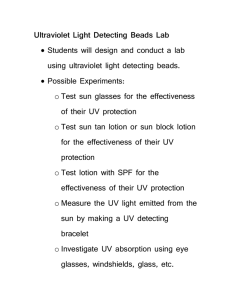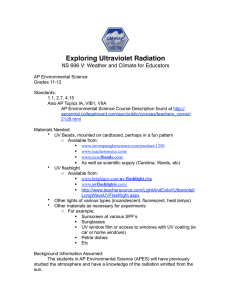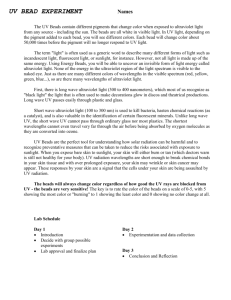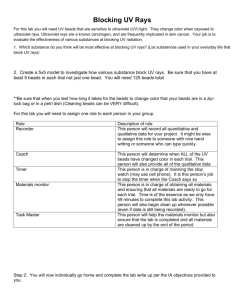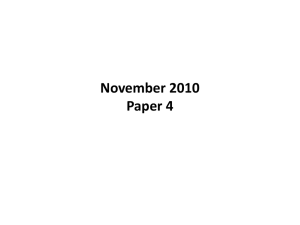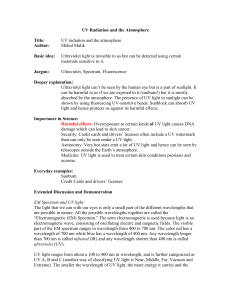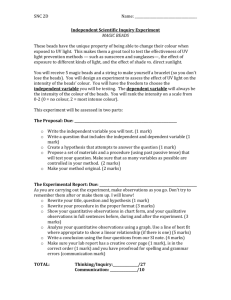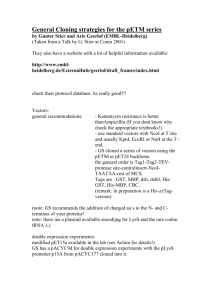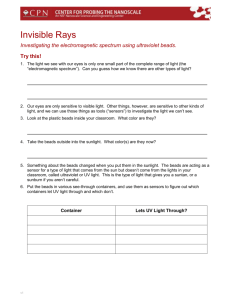EXTRA CREDIT - UV DETECTING BEADS EXPERIMENT Asking
advertisement
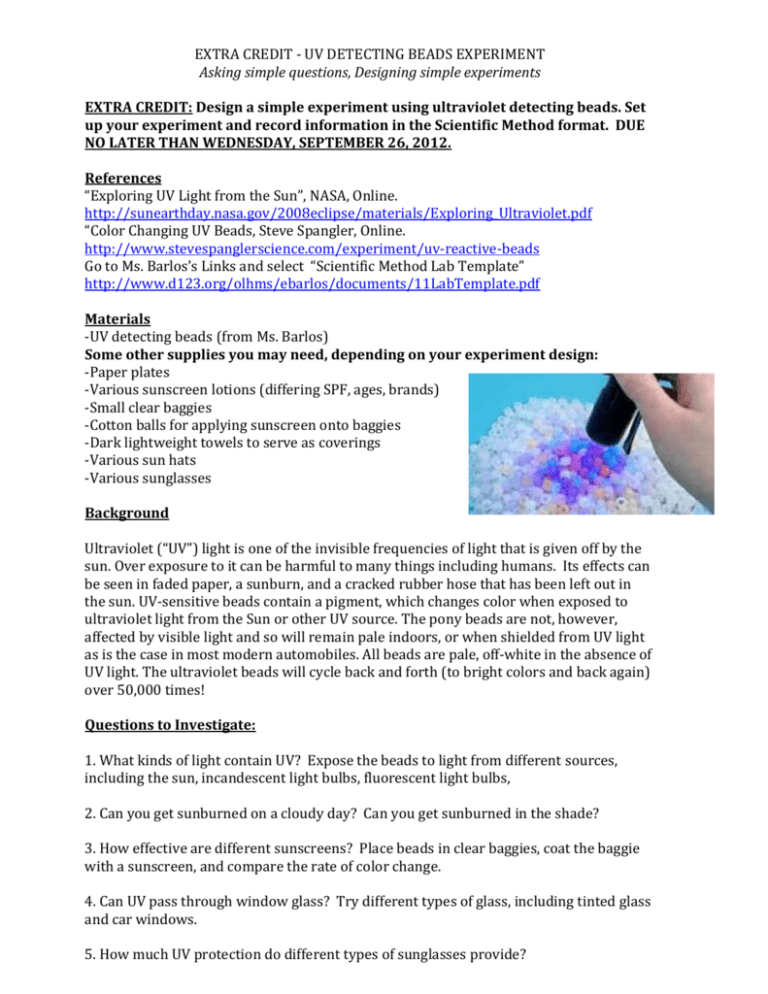
EXTRA CREDIT - UV DETECTING BEADS EXPERIMENT Asking simple questions, Designing simple experiments EXTRA CREDIT: Design a simple experiment using ultraviolet detecting beads. Set up your experiment and record information in the Scientific Method format. DUE NO LATER THAN WEDNESDAY, SEPTEMBER 26, 2012. References “Exploring UV Light from the Sun”, NASA, Online. http://sunearthday.nasa.gov/2008eclipse/materials/Exploring_Ultraviolet.pdf “Color Changing UV Beads, Steve Spangler, Online. http://www.stevespanglerscience.com/experiment/uv-reactive-beads Go to Ms. Barlos’s Links and select “Scientific Method Lab Template” http://www.d123.org/olhms/ebarlos/documents/11LabTemplate.pdf Materials -UV detecting beads (from Ms. Barlos) Some other supplies you may need, depending on your experiment design: -Paper plates -Various sunscreen lotions (differing SPF, ages, brands) -Small clear baggies -Cotton balls for applying sunscreen onto baggies -Dark lightweight towels to serve as coverings -Various sun hats -Various sunglasses Background Ultraviolet (“UV”) light is one of the invisible frequencies of light that is given off by the sun. Over exposure to it can be harmful to many things including humans. Its effects can be seen in faded paper, a sunburn, and a cracked rubber hose that has been left out in the sun. UV-sensitive beads contain a pigment, which changes color when exposed to ultraviolet light from the Sun or other UV source. The pony beads are not, however, affected by visible light and so will remain pale indoors, or when shielded from UV light as is the case in most modern automobiles. All beads are pale, off-white in the absence of UV light. The ultraviolet beads will cycle back and forth (to bright colors and back again) over 50,000 times! Questions to Investigate: 1. What kinds of light contain UV? Expose the beads to light from different sources, including the sun, incandescent light bulbs, fluorescent light bulbs, 2. Can you get sunburned on a cloudy day? Can you get sunburned in the shade? 3. How effective are different sunscreens? Place beads in clear baggies, coat the baggie with a sunscreen, and compare the rate of color change. 4. Can UV pass through window glass? Try different types of glass, including tinted glass and car windows. 5. How much UV protection do different types of sunglasses provide? 6. How does the amount of UV from the sun compare to the UV in tanning booths? Now Design a Simple Experiment: 1. Decide what UV protection you will test. Try COMPARING 2 different types of protection. 2. Decide how to SET UP the experiment. What is your control set up? Draw a sketch of your experiment on notebook paper 3. Decide how to QUANTIFY your results? HINT: rank the intensity of the various colored beads on the bracelets. 0 = Bead did not change color (remained white) 1 = Very Pale/Light 3 = Medium 5 = Medium/Dark 9 = Very Dark For example, if the bead has a very light blue color, write the number “1” in the appropriate column. 4. Keep track of your results in a DATA TABLE (see sample below) in your notebook. 5. What conclusion can you draw from your experiment? Try graphing your conclusion.

